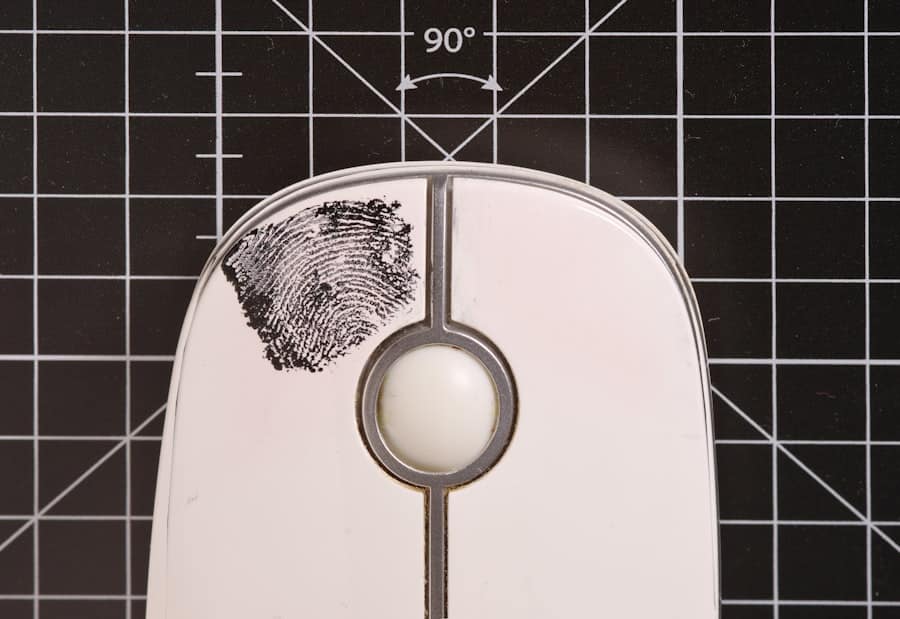Biometric authentication systems have emerged as a cornerstone of modern security protocols, leveraging unique physiological or behavioral characteristics to verify an individual’s identity. Unlike traditional authentication methods, such as passwords or PINs, which can be forgotten, stolen, or easily guessed, biometric systems utilize traits that are inherently tied to the individual. Common modalities include fingerprint recognition, facial recognition, iris scanning, and voice recognition.
The increasing reliance on these systems is driven by their ability to provide a higher level of security and convenience, particularly in environments where sensitive data is handled or where access control is paramount.
Initially, biometric systems were primarily used in high-security environments, such as government facilities and military installations.
However, with the proliferation of smartphones and other personal devices equipped with biometric sensors, these systems have become mainstream. For instance, Apple’s Face ID and fingerprint recognition technology have set a precedent for consumer adoption, demonstrating that biometric authentication can be both secure and user-friendly. As organizations increasingly integrate biometric systems into their security frameworks, understanding the vulnerabilities and best practices associated with these technologies becomes essential.
Key Takeaways
- Biometric authentication systems use unique physical or behavioral characteristics for identity verification
- Common cyber attacks on biometric systems include spoofing, replay attacks, and database breaches
- Best practices for securing biometric systems include using liveness detection, encryption, and secure storage of biometric data
- Multi-factor authentication adds an extra layer of security to biometric systems, such as combining fingerprint recognition with a PIN
- Encryption and data protection are crucial for securing biometric data from unauthorized access or theft
Common Cyber Attacks on Biometric Authentication Systems
Despite their advantages, biometric authentication systems are not immune to cyber threats. One of the most prevalent forms of attack is spoofing, where an attacker attempts to deceive the system by presenting a fake biometric trait. For example, in fingerprint recognition systems, attackers may use silicone molds of legitimate fingerprints to gain unauthorized access.
Similarly, facial recognition systems can be tricked using high-resolution photographs or 3D masks that mimic the target’s facial features. These types of attacks highlight the need for robust anti-spoofing measures to ensure the integrity of biometric systems. Another significant threat is the potential for data breaches that expose biometric data.
Unlike passwords, which can be changed if compromised, biometric traits are permanent and cannot be reset. If an attacker gains access to a database containing biometric information, they can exploit this data for identity theft or unauthorized access indefinitely. High-profile breaches involving biometric data have raised concerns about the long-term implications of storing such sensitive information.
For instance, in 2015, the U.S. Office of Personnel Management suffered a massive data breach that compromised the personal information of millions of federal employees, including their fingerprints. This incident underscored the critical need for stringent security measures to protect biometric data from unauthorized access.
Best Practices for Securing Biometric Authentication Systems

To mitigate the risks associated with biometric authentication systems, organizations must adopt a comprehensive approach to security that encompasses various best practices. One fundamental strategy is to implement multi-layered security protocols that combine biometric authentication with other forms of verification. This could involve integrating traditional methods such as passwords or security tokens alongside biometrics to create a more robust defense against unauthorized access.
By requiring multiple forms of verification, organizations can significantly reduce the likelihood of successful attacks. Additionally, organizations should prioritize the use of advanced anti-spoofing technologies that enhance the reliability of biometric systems. For instance, liveness detection techniques can be employed to ensure that the biometric trait being presented is from a live individual rather than a replica.
This may involve analyzing subtle movements or changes in skin texture during fingerprint scans or using infrared sensors to detect heat emitted by a living person during facial recognition processes. By incorporating these technologies into their biometric systems, organizations can bolster their defenses against spoofing attacks and enhance overall security.
Multi-factor Authentication for Biometric Systems
Multi-factor authentication (MFA) has gained traction as a critical component in securing biometric systems. By requiring users to provide two or more verification factors before granting access, MFA adds an additional layer of security that significantly reduces the risk of unauthorized access. In the context of biometric authentication, this could involve combining a fingerprint scan with a one-time password (OTP) sent to the user’s mobile device or requiring facial recognition alongside a PIN code.
The implementation of MFA not only enhances security but also addresses some inherent vulnerabilities associated with biometric systems. For example, if an attacker manages to spoof a fingerprint or facial recognition system, they would still need to bypass the second factor of authentication to gain access. This layered approach ensures that even if one method is compromised, additional barriers remain in place to protect sensitive information.
Organizations that adopt MFA for their biometric systems can better safeguard against various cyber threats while providing users with a more secure experience.
Encryption and Data Protection for Biometric Data
Given the sensitivity of biometric data, encryption plays a pivotal role in protecting this information from unauthorized access and breaches. When biometric traits are captured and stored, they should be encrypted both at rest and in transit to ensure that even if an attacker gains access to the data storage system, they cannot easily exploit it. Advanced encryption standards (AES) are commonly employed for this purpose, providing robust protection against potential threats.
Moreover, organizations should consider implementing secure hashing algorithms for storing biometric data. Instead of storing raw biometric traits directly, hashed representations can be used to enhance security further. This means that even if an attacker accesses the database, they would only encounter hashed values rather than actual biometric data.
Additionally, employing techniques such as salting—adding random data to the input of a hashing function—can further complicate efforts to reverse-engineer hashed values back into usable biometric traits.
Continuous Monitoring and Updating of Biometric Systems

The dynamic nature of cyber threats necessitates continuous monitoring and updating of biometric authentication systems.
Regular audits and penetration testing can help identify vulnerabilities within the system and ensure that security measures are effective against current attack vectors.
Furthermore, software updates should be implemented promptly to address any identified vulnerabilities or weaknesses in the biometric system’s architecture. Cybersecurity threats evolve rapidly; therefore, organizations must stay informed about the latest developments in both biometric technology and cyber threats. By fostering a culture of continuous improvement and vigilance, organizations can enhance their resilience against potential attacks and maintain the integrity of their biometric authentication systems.
User Education and Training for Biometric Security
User education is a critical component in ensuring the effectiveness of biometric authentication systems. Employees and users must understand how these systems work and the importance of safeguarding their biometric data. Training programs should emphasize best practices for using biometric authentication securely, such as avoiding sharing devices with others or using biometrics in unsecured environments.
Additionally, organizations should educate users about potential threats associated with biometric systems and how to recognize suspicious activities. For instance, users should be aware of phishing attempts that may target them with fraudulent requests for their biometric data or attempts to trick them into providing access through social engineering tactics. By fostering awareness and understanding among users, organizations can create a more secure environment where individuals are proactive in protecting their own identities and sensitive information.
Collaboration with Cybersecurity Experts for Biometric System Security
To effectively secure biometric authentication systems, organizations should consider collaborating with cybersecurity experts who specialize in this domain. These professionals possess the knowledge and experience necessary to identify vulnerabilities specific to biometric technologies and recommend tailored solutions to mitigate risks. Engaging with cybersecurity consultants can provide organizations with insights into best practices for implementing robust security measures while navigating the complexities associated with biometric data protection.
Moreover, partnerships with cybersecurity firms can facilitate access to cutting-edge technologies and tools designed specifically for enhancing biometric system security. These collaborations can lead to the development of innovative solutions that address emerging threats while ensuring compliance with industry regulations regarding data protection and privacy. By leveraging external expertise and resources, organizations can strengthen their overall security posture and build trust among users regarding the safety of their biometric authentication systems.
In conclusion, as biometric authentication systems continue to gain traction across various sectors, understanding their vulnerabilities and implementing effective security measures is paramount. By adopting best practices such as multi-factor authentication, encryption, continuous monitoring, user education, and collaboration with cybersecurity experts, organizations can significantly enhance the security of their biometric systems while safeguarding sensitive user data from potential cyber threats.
If you are interested in learning more about cybersecurity and technology, you may also want to check out How to Choose the Best Tablet for Students. This article provides valuable insights into selecting the right tablet for educational purposes, which can also be relevant in ensuring secure biometric authentication systems for students and educational institutions.
FAQs
What is biometric authentication?
Biometric authentication is a security process that uses unique biological characteristics, such as fingerprints, facial recognition, or iris scans, to verify a person’s identity.
What are the common cyber attacks on biometric authentication systems?
Common cyber attacks on biometric authentication systems include spoofing (using fake biometric data), replay attacks (replaying previously captured biometric data), and man-in-the-middle attacks (intercepting and altering biometric data during transmission).
How can biometric authentication systems be secured from cyber attacks?
Biometric authentication systems can be secured from cyber attacks by implementing liveness detection to ensure the biometric data is from a live person, using encryption to protect biometric data during transmission, and regularly updating the system to patch any vulnerabilities.
What are the best practices for securing biometric authentication systems?
Best practices for securing biometric authentication systems include implementing multi-factor authentication, storing biometric data in a secure and encrypted manner, and regularly testing the system for vulnerabilities.
What are the potential risks of using biometric authentication systems?
Potential risks of using biometric authentication systems include the possibility of biometric data being stolen or compromised, privacy concerns related to the collection and storage of biometric data, and the potential for false positives or false negatives in the authentication process.

